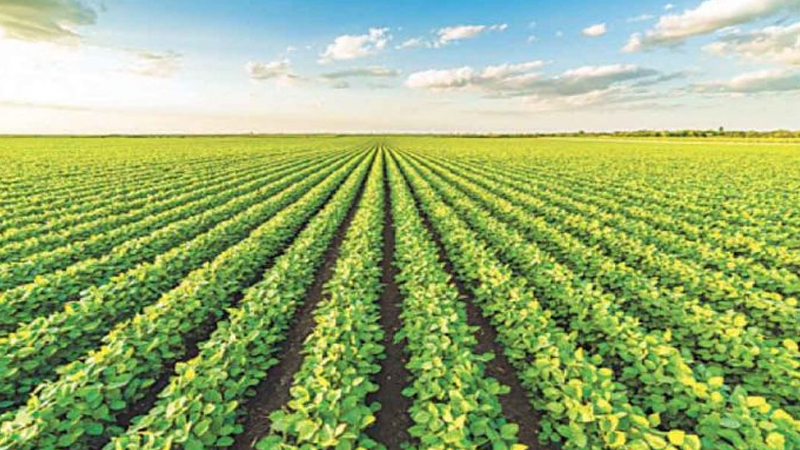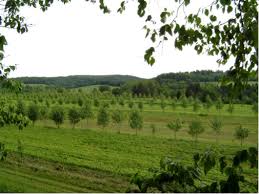Intercropping- Definition, Example, Benefits
Definition
Intercropping is multiple cropping practices concerned with growing two or more crops simultaneously on the same piece of land.
Example- wheat + mustard

Intercropping includes alley cropping, strip cropping, contour cropping, paired row cropping, parallel cropping, skip cropping etc.
What is multiple cropping?
It is defined as cultivation of two or more crops on the same field in a year without deteriorating soil fertility. It is the intensification of cropping in time and space dimensions both. Thus more crops within a year and more crops on the same piece of land during a single growing season.
What is goal of Intercropping?
The most common goal of intercropping is to produce more yields on a given piece of land by making use of resources or ecological processes that would otherwise not be utilized by a single crop.
Prerequisites of Intercropping
- When two or more crops are growing together, each must have adequate space to maximize cooperation and minimize competition between the crops.
- The degree of spatial (space) and temporal (time) overlap in the two crops can vary somewhat, but both requirements must be met for a cropping system to be an intercrop.
- Therefore, four things need to be considered: (1) spatial arrangement, (2) density, (3) maturity dates of the crops being grown, and (4) plant architecture.
Spatial Arrangement- There are four basic spatial arrangements used in intercropping.
- Row intercropping – growing two or more crops at the same time with at least one crop planted in rows.
- Strip intercropping – growing two or more crops together wide enough to permit separate crop machine production but close enough for the crops to interact.
- Mixed intercropping – growing two or more crops together in no distinct row arrangement.
- Relay intercropping – planting a second crop into a standing crop at a time when the standing crop is at its reproductive stage but before harvesting.

Density- To optimize plant density, the seeding rate of each crop in the mixture is adjusted below its full rate. If full rates of each crop were planted, neither would yield well because of intense overcrowding. By reducing the seeding rates of each, the crops have a chance to yield well within the mixture.
Maturity Dates- Planting intercrops having staggered maturity dates or development periods takes advantage of variations in peak resource demand for nutrients, water and sunlight. Having one crop mature before its companion crop lessens the competition between the two crops.
Crops or varieties with different maturity dates can also assist staggered harvesting and separation of grain commodities.
In the sorghum pigeonpea intercrop, common in India, the sorghum dominates the early stages of growth and matures in about 4 months. Following harvest of the sorghum, the pigeonpea flowers and ripens. The slow-growing pigeonpea has virtually no effect on the sorghum yield.
Plant Architecture- It means to allow one crop of the mix to capture sunlight that would not otherwise be available to the others. Widely spaced corn plants growing above an understory of beans and pumpkins would be a classic example.
Benefits of Intercropping
The most common intercropping benefits are:
- Increased profit- Secondary crops provide more returns and ensure profit even when the primary crop fails.
- Spatial arrangement- Planting species in-between rows allows utilizing the soil in a more efficient way, unlike mono-cropping when spaces between rows are unused.
- Protection of the crop- Intercropping performs several functions, repelling or trapping pests and attracting beneficial ones as well as protecting from winds or giving shelter from extra sunlight.
- Prevention of soil erosion– Plants between rows and in alley intercropping, in particular, mitigates erosion with their roots.
- Added nutrients for the main crop- The leguminous crop as intercrop fix nitrogen and provides nitrogen to main crop thus reduces the dose of nitrogen.
- More efficient use of natural resources like water and solar energy as they are distributed to secondary crops as well.
- Improved weed management– Beneficial plants, not weeds, occupy vacant spaces between rows in intercropping.
- Enhanced biodiversity and ecological stability- The more agricultural species grow; the better it is for the environment.
Read also…
Intercrop Productivity & Land Equivalent Ratio
CROPPING PATTERN-CROPPING SYSTEM
STRIP CROPPING-DEFINITION,USE&TYPES